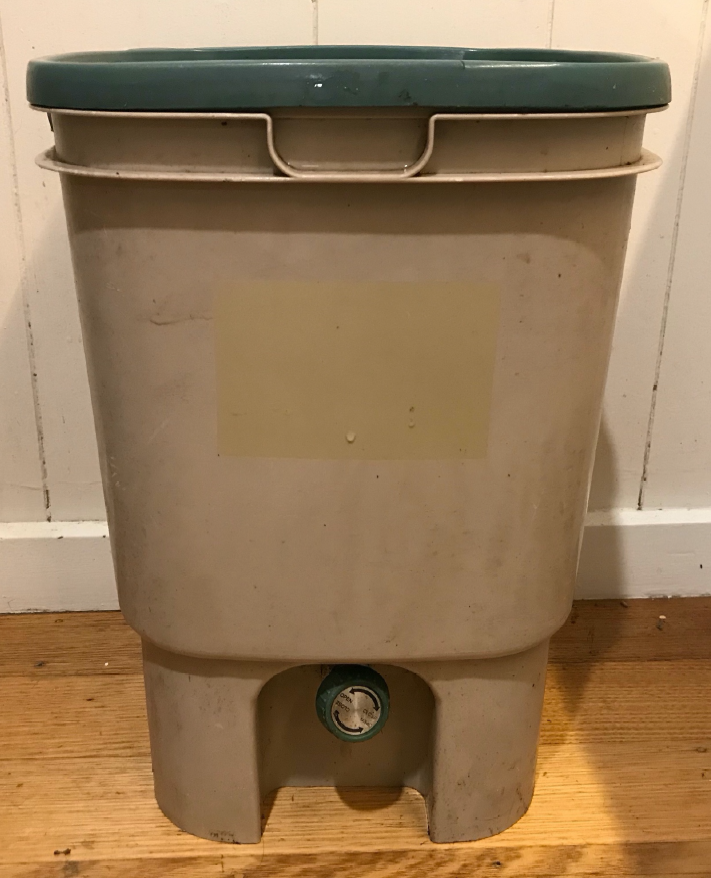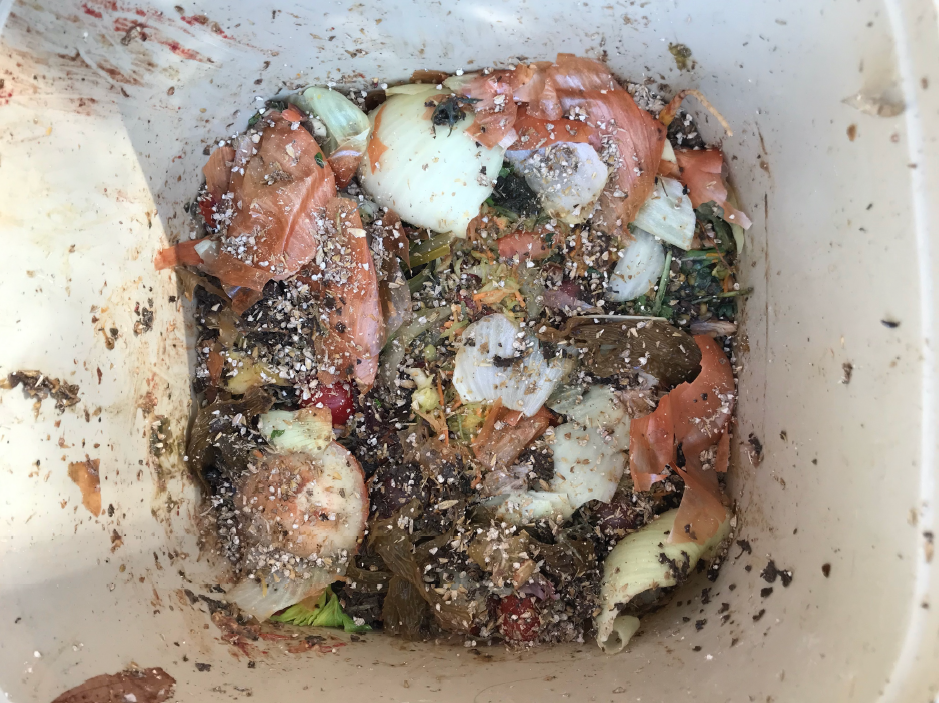Bokashi composting

What is bokashi?
Bokashi is a composting method that originated in Japan. It ferments food waste (to prevent it turning putrid) until it can be buried under soil or added to a compost bin to complete decomposition.
Is bokashi right for me?
Bokashi is the easiest compost method to learn because it can process almost any food waste. It can be kept indoors so it works well for locations without easy access to garden areas, like apartments and office buildings. It doesn’t work well for people who cannot carry a heavy bucket, or people who don’t like the smell of pickles. Keep in mind that bokashi is not a complete composting system, so you will need somewhere to empty the bokashi when it’s full (approximately every 2-4 weeks). Many people bury it in a garden bed around their office or apartment building. Others take it to a neighbour’s compost bin or a community garden.
What can I compost with bokashi?
Bokashi can process almost any food waste, including things that are hard to compost in other systems like meat, dairy, bread, onions and citrus. Avoid fats, liquids and any rotten or mouldy food.

You will need:
A bokashi bucket. Any bucket with a tight-fitting lid, and a way for liquid to drain from the food waste. You can purchase a bokashi bucket from nurseries or hardware stores, or make your own from upcycled food grade plastic buckets by drilling small holes in the base of one bucket (with a tight-fitting lid), and then sitting it inside another to catch the leachate.
Some bokashi grain. A substrate like bran that has been cultured with bokashi microbes. It is added in small quantities to inoculate your food waste with the right microorganisms. Most people buy it from nurseries and hardware stores, but there are instructions on the internet to make your own. A liquid spray is also available. Commercial bokashi will cost the average household 50c per week.
A potato masher. Or some kind of tool to squash the air out of your scraps. Bokashi works best in anaerobic conditions (without oxygen), and this will also help you fit more into the bucket before it needs to be emptied.
Step by step bokashi composting:
1. Start your bokashi bucket with a thin layer of bokashi grain.
2. Collect your food waste in a small caddy on your benchtop (an old icecream container is perfect).
3. At the end of each day, empty the caddy into your bokashi bucket, squash the contents down with a potato masher and sprinkle with a small amount (1-2
tablespoons) of bokashi grain. For large amounts of food waste, add in layers about 4cm thick with a sprinkle of bokashi over each one. Close the lid tightly.
4. Every week, drain off the liquid from your bokashi bucket. You can pour this down your sink, or dilute it heavily and use to water plants.
5. When your bucket is full, either bury it at least 30cm deep in a garden bed, or add it to a compost bin and cover with carbon-rich materials like shredded paper or autumn leaves. Rinse the bucket and start again.
Troubleshooting:
White mould and vinegary smells are normal and healthy, but black or blue mould and putrid smells indicate a problem. Bury the contents of your bucket and start again.
- Drain off liquid from your bucket weekly to prevent funky smells
- Bokashi grain contains living microbes. Store them somewhere cool, dark and dry, use a bit more than recommended if it is older and replace with fresh grain if it loses effectiveness
- Squash the oxygen out each time you add food waste and ensure the lid fits tightly
- Extreme heat or cold may inhibit bokashi cultures, so keeping your bucket indoors is a good idea.
Notes updated April 2021. katlavers.com Insta @kat.lavers


